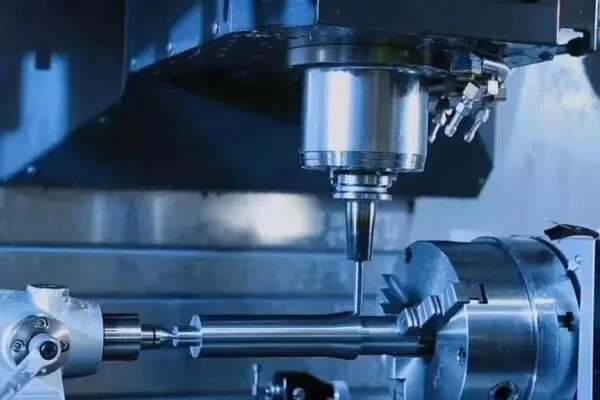Tips for Rapid Prototyping Success
Rapid prototyping has been around for a while, but it’s taken off in the last few years. Today, people are using rapid prototyping for everything from creating the latest ideas for new inventions to creating new products for the home.
In addition, rapid prototyping has also helped people create innovative ideas for new businesses. But just because rapid prototyping has been around for a while doesn’t mean it’s been mastered. This blog will look at the most important tips and tricks to rapid prototyping success.
What are the signs of a successful prototype?
What distinguishes a successful prototype from one that satisfies the definition of a prototype? Every list would be lacking because each entrepreneur or developer needs a distinct set of features from a prototype. In addition, each new product may gain different advantages from having one. Although a successful prototype often has the following characteristics:
- Demonstrates the product’s practical usefulness (and whether it needs to be fine-tuned).
- Demonstrates how the product interacts with and fits into other parts or components (and whether design or dimensional adjustments are required).
- Offers a close replica of the aesthetics of the finished product (and indicates whether the look of the product is in keeping with your overall goals and needs).
- Demonstrates that the product can be manufactured correctly using your chosen production method (or shows that other processes can or should be considered).
- Poses issues the product design did not previously address (and potentially improves that design).
- Offers a reasonable assurance that a product is prepared for production (only after testing, examination and, potentially, additional prototype stages)
- Finally, a successful prototype fits your budget.
How do you meet these standards, or whatever they may be, for a successful prototype? Here are a few pieces of advice.

Tips for Successful Rapid Prototyping
Rapid prototyping done right could be the difference between racing your competitors to the market and starting again.
– Know what you need on your terms.
We keep emphasizing the same thing, but it’s important to remember that there isn’t a universally functional prototype. Every product and developer has unique needs that must be satisfied and unique questions and issues that you must resolve. It’s critical to comprehend how those details—specifically being the operative word—apply to you. If a prototype doesn’t achieve clearly stated and understood goals, it can be challenging to determine its success.
– Establish clear objectives for each prototype or iteration.
A prototype frequently finds it challenging to perform multiple tasks at once. Therefore, several iterations are frequently advised or necessary, depending on the product development and pitching process’s cost, logistics, or realities. In those circumstances, be even more specific about the features you want from a prototype iteration.
For example, suppose you’re interested in rapid prototyping. In that case, one of your iteration goals can be to ensure that your product appeals to investors and customers on an aesthetic level. The objective of more advanced prototypes can be to demonstrate the mechanical soundness or dimensional viability of your product.
– Know the areas of expertise of your prototype provider.
The finest prototype suppliers contribute value by simplifying the process as much as possible and contributing their invaluable knowledge and experience at every stage. Prototype suppliers may offer rapid prototyping or 3D printing, for instance. They won’t have such skills but will work with you to accommodate a brief injection molding run. In addition, numerous businesses specialize in specific industries. You can get help with manufacturability difficulties, material inquiries, and the reality of moving your product from the prototype stage to production from several vendors with experience in both prototyping and manufacturing. Be careful to study the providers you select or ask the appropriate questions to understand who they are and what they offer.
– Understand the limitations of your specific prototype.
It’s important to remember what a particular iteration can’t or shouldn’t be able to do, like defining specific requirements and objectives for your prototype. Also, while some rapid prototyping techniques or materials work best for testing cosmetic prototypes, others are better suited for creating functional prototypes.
– Know the characteristics of the material used in your prototype.
An important consideration is the material used in your prototype. For instance, when testing and certifying a prototype against the material you select for your final product, there may be changes in the hardness, flexibility, strength, resistance to temperature or other elements, and durability, among many other characteristics.
– Avoid tunnel vision
The nuances of a project can easily draw a development team’s attention, causing them to lose sight of bigger issues that would likely be visible to an outsider with fresh eyes. Naturally, product developers also desire the success of their prototypes. To gain from the various perspectives and ways of interacting with your product, test your prototype with people unfamiliar with it, both inside and outside your business.
– Be open-minded
Remember what we said earlier: a prototype should teach you something about your product. Be cautious before assuming that a prototype does what it should or is close enough. Utilize the chance to look at your product in person and consider improving it in design or production.
– Keep an eye on the big picture.
Remember to emphasize the need to stay moderate with prototypes. While keeping track of your prototyping expenditures as part of your overall budget is key, it is important to note that it is a crucial step in the manufacturing process that, when done effectively, delivers a tremendous ROI.
Fortunately, methods like fast prototyping are frequently significantly more affordable than alternative methods, and knowledgeable prototype suppliers can help you make the most of each iteration of your product.
Rapid prototyping is either the miracle that saves your company or the curse that gets in the way of rapid product improvement. With a rapid prototyping system, you can quickly create and test ideas.
